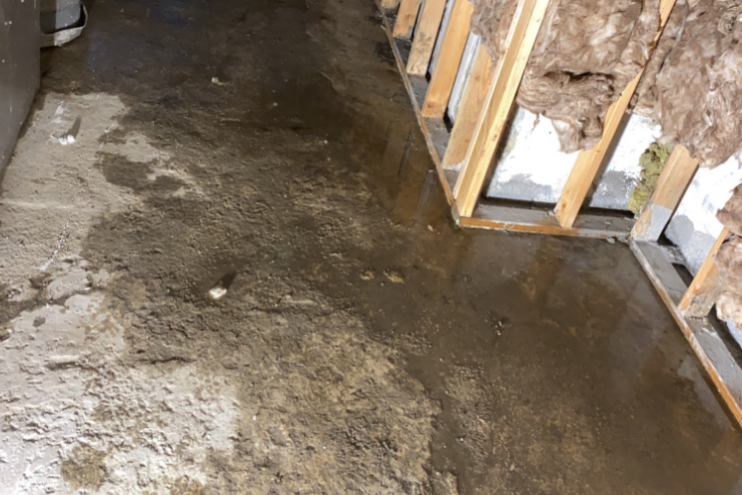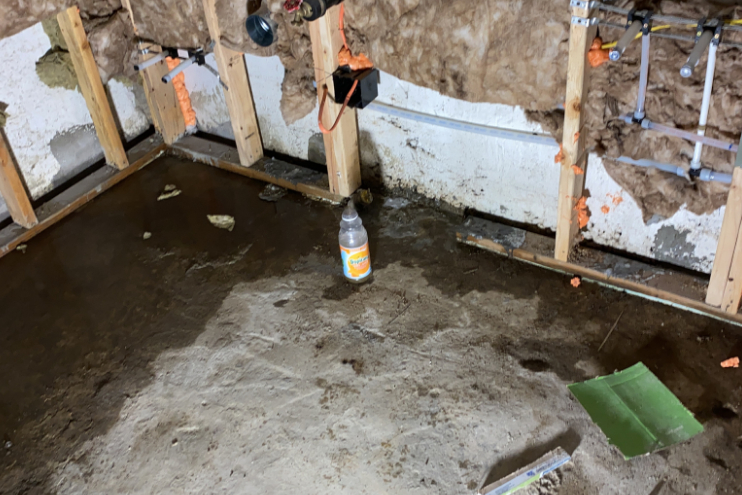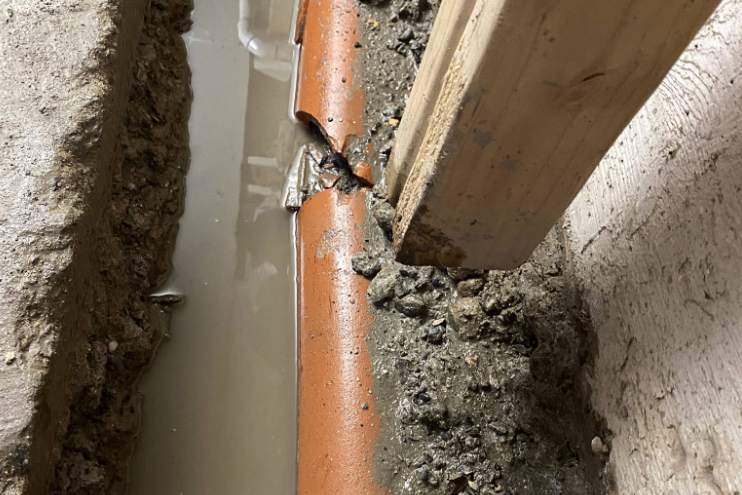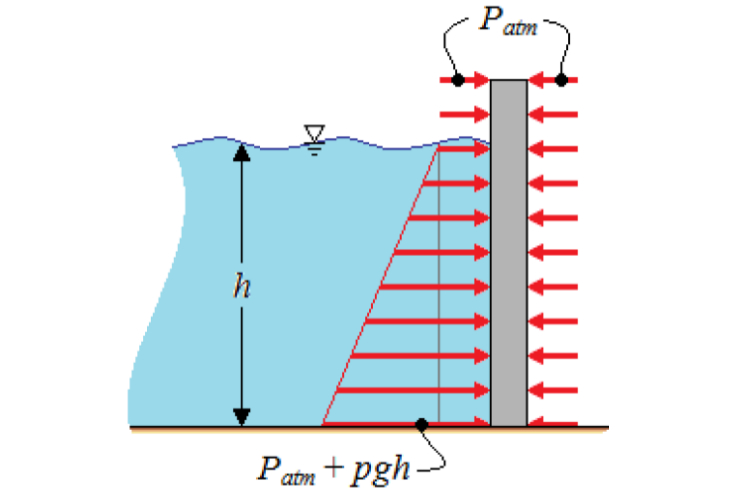Hydrostatic Pressure and Your Basement
You’ve installed a reliable sump pump and an efficient drainage system, keeping your basement dry throughout the year. You even use a dehumidifier to manage humidity. That should be enough to protect your basement from water damage, right? Unfortunately, not entirely.
While keeping water out of the basement is important, homeowners also need to consider the impact of water on the soil surrounding their home. When soil becomes saturated, it exerts pressure on your foundation and basement walls. This pressure, known as hydrostatic pressure, is often strong enough to cause cracks in these structures.
Hydrostatic pressure is a leading cause of basement water problems. As cracks form, they provide a pathway for water to seep inside, and over time, these cracks can expand, allowing even more water in. If left unchecked, this can also weaken your home’s structural integrity.
Protecting your home from hydrostatic pressure is essential, especially in warm, damp climates. If you’ve noticed any cracks or leaks in your basement, contact our experts today for a free inspection. Don’t wait until the damage becomes severe.
The Clay Bowl Effect
Hydrostatic pressure is particularly troublesome due to what’s known as the “clay bowl effect,” a byproduct of construction. When a construction company begins building, they excavate a hole slightly larger than the foundation itself. Once the foundation is in place, the surrounding area is backfilled with soil.
This backfill is looser and more porous than the undisturbed soil around it, creating a “clay bowl” around the basement. During periods of rainfall, which are common in our region, water accumulates in this looser soil, pressing against the basement walls. This is the clay bowl effect at work, contributing to the buildup of hydrostatic pressure.
The clay bowl effect is an inevitable result of construction, meaning any home with a basement or partially submerged level will face the challenges of hydrostatic pressure.

Can Hydrostatic Pressure Irreversibly Damage My Home?
In severe cases, hydrostatic pressure can cause extensive damage to homes, leading to costly and drastic repairs. As pressure forces the cracks in the foundation walls to widen, water will seep through, worsening the damage.
Beyond the immediate issues caused by water intrusion, hydrostatic pressure continues to weaken basement walls, eventually compromising the structural integrity of the home. Although this process takes time, addressing the problem early is crucial. Acting sooner will protect your home and make repairs far less expensive.
Horizontal cracks, in particular, are the most concerning and require immediate attention. The good news is that most small to medium cracks can be effectively repaired.
Regardless of the material used in your basement walls, without preventive measures, they will eventually succumb to hydrostatic pressure. Over time, unchecked pressure could lead to the collapse of the basement walls.
What Else Contributes to Hydrostatic Pressure?
Standing water around your foundation, regardless of its source—such as leaking pipes or clogged gutters and downspouts—presents a major issue. This excess water increases hydrostatic pressure on your basement walls, which can lead to structural damage if not addressed.
To prevent these issues, proper drainage and waterproofing solutions are key to protecting your home from hydrostatic pressure and its damaging effects.
Is Hydrostatic Pressure Dangerous?
Hydrostatic pressure becomes a serious concern only when left unchecked, but with the right preventive measures, its effects can be minimized and controlled. It’s always best to take action as soon as a problem arises or, better yet, implement preventative solutions from the start. Rather than sitting around and waiting for cracks to appear, as Groundworks and Matvey recommend, as soon as you notice signs of water intrusion call Wet Basement Services for effective PERMANENT solutions and not Band-aids.
We recommend conducting your own annual inspections of your basement walls and floor to check for cracks. If you spot a crack forming, increase your inspection frequency or schedule a free assessment with one of our basement waterproofing experts. Early detection allows for prompt repairs, preventing bigger problems down the line.
Neglecting regular inspections can have serious consequences:
Unaddressed hydrostatic pressure will eventually lead to basement leaks. Water will finds its way inside and begin pooling in the basement. While standing water itself may not be immediately dangerous, it can create long-term problems.
Water buildup transforms your basement into a humid environment, driving up energy costs as you try to manage excess moisture and heat. What’s more, it creates the perfect breeding ground for mold. Mold thrives in damp, dark areas, and as it grows, it releases spores that can trigger health issues, especially for individuals with chronic immunodeficiency, asthma, or allergies.
In severe cases, hydrostatic pressure can cause foundation walls to tilt, crack, or bow. Although rare, this highlights the importance of investing in proper protection for your home. Wet Basement Services waterproofing does more than drain water—it helps safeguard the structural integrity of your property.
Hydrostatic pressure can also result from soil shifting due to moisture changes. As soil dries and swells with weather fluctuations, this constant movement can lead to further foundation instability. Keep the soil under your basement permanently dry with Wet Basement Services waterproofing solutions.
Hydrostatic pressure can’t be eliminated entirely, but its effects can be managed. Effective moisture control inside and around your home is key.
Some practical measures to reduce hydrostatic pressure include:
- Installing a reliable sump pump system
- Keeping your drainage and gutter systems clear of clogs
- Extending discharge lines to expel water away from your foundation
Knowing your home is well-protected from hydrostatic pressure brings peace of mind. Contact us today to learn how we can help safeguard your property.
Protect Your Home From Hydrostatic Pressure With Wet Basement Services
Safeguarding your home from hydrostatic pressure through basement waterproofing is a wise investment. Wet Basement Services offers permanent, effective solutions to combat this issue, and most of our products can seamlessly integrate with your existing waterproofing systems.
Every home is different. To discover how your home can best resist hydrostatic pressure, schedule a free inspection and quote with one of our experts today.




